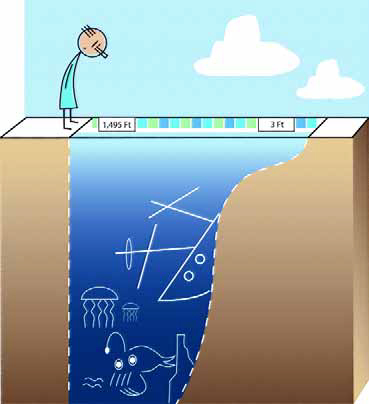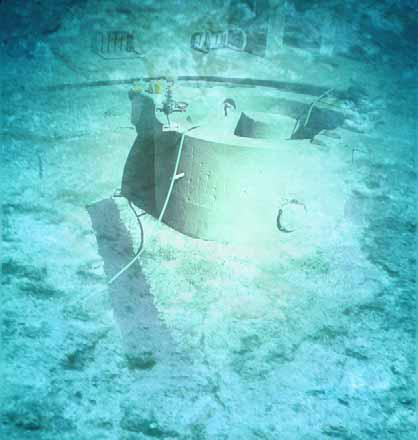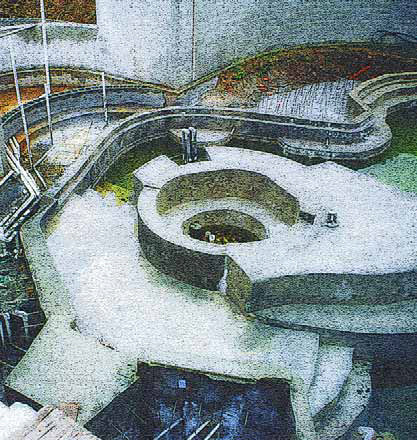project management
It's a tale of two visions. One contingent in the family wanted a formal, architectural pool that would reflect the geometry of the home. The other wanted to borrow the natural look of the lake and rock formations that flowed down the sloping backyard. Such divergent themes are generally difficult to blend into a coherent design, but I managed to do it with a little help from some friends. The project, which involves placing a formal, geometric pool atop a formation of artificial rock that looms over a grotto and lagoon-like pool below, is still under construction at this writing. At this point, I'd have to say that the results should be just as spectacular as the design process was arduous. My company is based in Raleigh, N.C., which, although it is hardly a backwater, is not exactly at the epicenter of watershape design or construction expertise. To integrate this diverse clutch of elements, I felt a need to
It's a tale of two visions. One contingent in the family wanted a formal, architectural pool that would reflect the geometry of the home. The other wanted to borrow the natural look of the lake and rock formations that flowed down the sloping backyard. Such divergent themes are generally difficult to blend into a coherent design, but I managed to do it with a little help from some friends. The project, which involves placing a formal, geometric pool atop a formation of artificial rock that looms over a grotto and lagoon-like pool below, is still under construction at this writing. At this point, I'd have to say that the results should be just as spectacular as the design process was arduous. My company is based in Raleigh, N.C., which, although it is hardly a backwater, is not exactly at the epicenter of watershape design or construction expertise. To integrate this diverse clutch of elements, I felt a need to
The art of watershaping so often is all about the art of finishing. Certainly, every stage of any project is important, but the final steps leading to completion are what make most designs come to life. The project pictured here, which I've covered in five of my "Details" columns during the past couple years, has been an undertaking of extraordinary scale and mammoth complexity. As I mentioned frequently in those columns (November 2003, January and February 2004 and January and February 2005), the lion's share of the project management fell to my east coast partner and dear friend Kevin Fleming, who truly has endured a baptism of Tisherman-style fire as he
The art of watershaping so often is all about the art of finishing. Certainly, every stage of any project is important, but the final steps leading to completion are what make most designs come to life. The project pictured here, which I've covered in five of my "Details" columns during the past couple years, has been an undertaking of extraordinary scale and mammoth complexity. As I mentioned frequently in those columns (November 2003, January and February 2004 and January and February 2005), the lion's share of the project management fell to my east coast partner and dear friend Kevin Fleming, who truly has endured a baptism of Tisherman-style fire as he
In the October 2005 issue of WaterShapes, I discussed a project that had tested my abilities and helped me to grow as a landscape designer. To that point in my career, I had functioned mainly as a designer focused on planting design. It was quite a step for me to accept the greater responsibility that came with a project that put me in charge of work on the total environment - pool, spa, deck, outdoor amenities and artwork placement as well as the planting plan. I knew going in that project management is a challenge no matter the size or scale of the job. Coordinating various trades, anticipating schedules and materials needs, making on-site design decisions and covering all
For all the beauty and creativity that characterize the finished watershapes we cover in our magazine, I often find just as much inspiration in the stories behind these polished works of art. Quite often, in fact, I perceive that these
It'd be great if we all lived in a world where a handshake was sufficient to seal a deal and no legal documents were needed. Unfortunately, however, we live in a society in which contracts are a necessity for most of us in business. When I first started out, I took on jobs without signed contracts, and for the first few years I didn't run into any problems. As I moved into higher-dollar projects, however, I developed a quick appreciation for the value of a contract when a client refused to pay for my services as we'd verbally agreed he would. Although I realize there are people out there who run strong, successful businesses without a need for contracts and rarely run into problems, for most of us I believe it is a critical component of every job. The purpose of any contract is to
In renovation projects, preparation of the pool's interior surface for a new finish is truly where the rubber meets the road - a key step in which what you've planned and what you actually do must come together. With this installment of "Details," we're doubling back to the Los Angeles project we left behind in October as we waited for tile to arrive from Italy. If you'll recall, the pool had been built in the 1920s and graces a property with a magnificent Gatsby-era home. As I mentioned at the outset of this interrupted sequence of columns, the homeowners have been extremely involved, always wanting to know as much as they possibly can about what's going on in their backyard. As I mentioned as well, the challenge
The project I've been working on in the hills outside Hanover, Pa., has just about every feature, bell and whistle one can imagine. That inclusiveness of detail at every level has translated to an unusually intricate construction process, as I mentioned last time in discussing the excavation, forming, plumbing and steel phases. Now we get to the gunite. Where a garden-variety backyard pool involves placement of maybe 30 to 50 yards of concrete and some larger projects may run in the 50-to-70-yard range (and where most of mine tend to fall in the 90-to-130 yard range) - this project needed two gunite rigs shooting for two solid days, 12 to 13 hours each day. The pool shell alone (excluding the waterfall, the grotto and several other features we'll get into later) required a staggering 300 yards of concrete. That's about





















